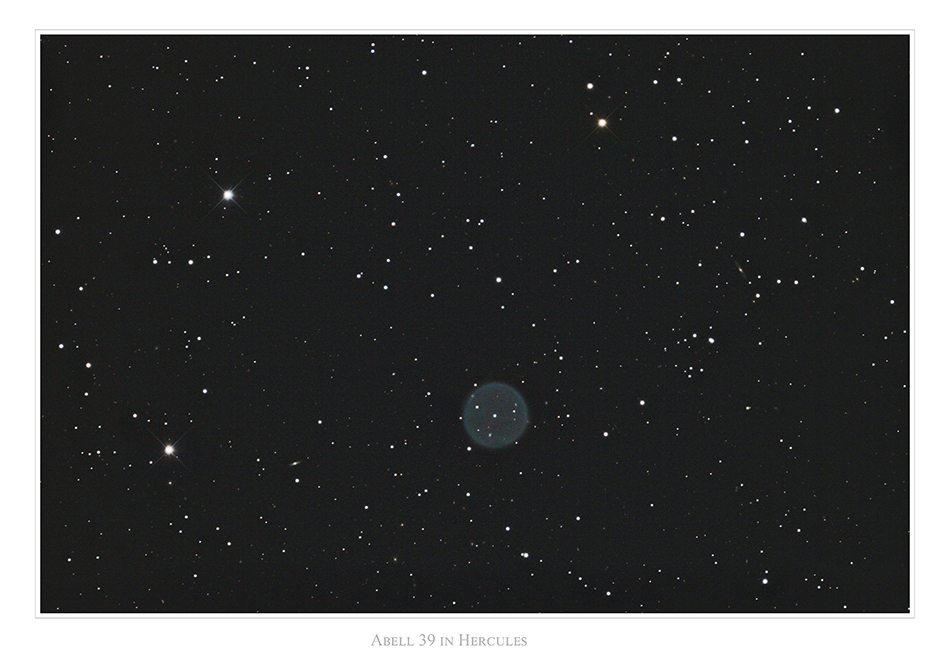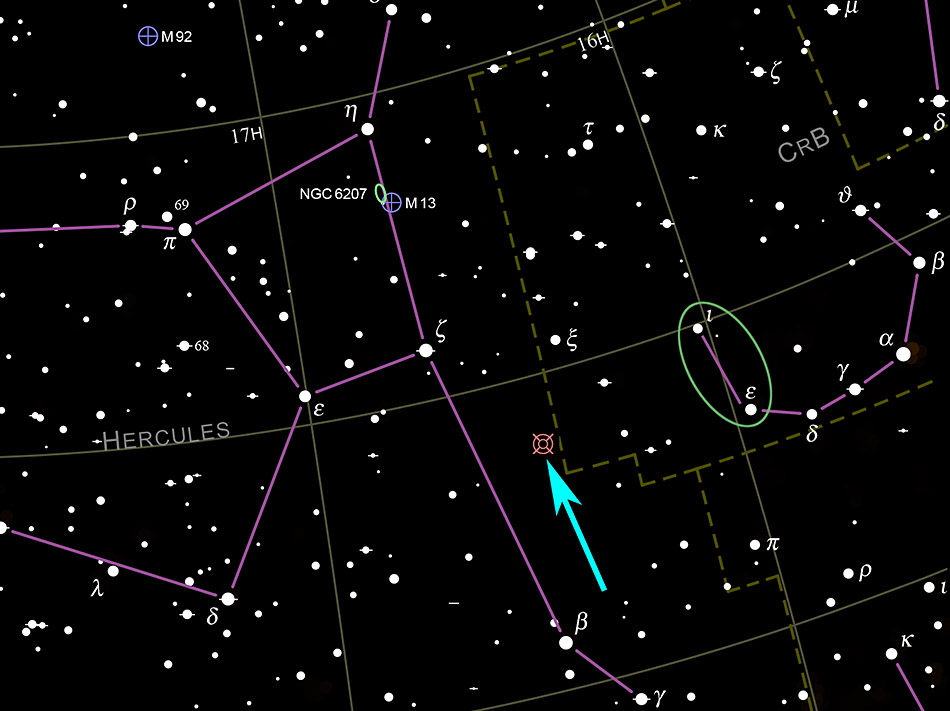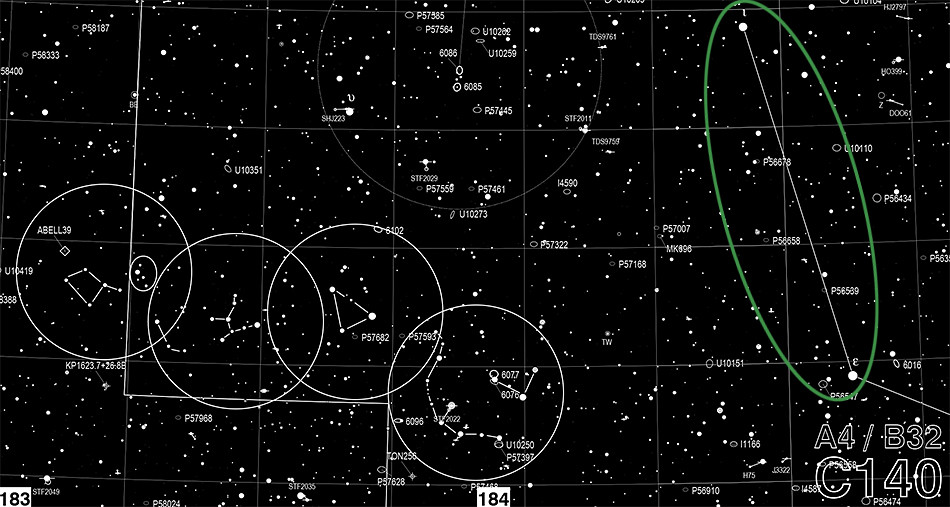The low surface brightness planetary nebula Abell 39 (PK 047+42.1) in the constellation of
Hercules on June 21 / 22, 2014, the shortest night of the year. Abell 39 is a big cloud of gas expelled from an unstable dying star and was
identified by George O. Abell from Palomar Survey plates in 1955. It is 7'000 light years from earth, about five or six light years across and has
expanded for 22'000 years. (Sources: Wikipedia / http://antwrp.gsfc.nasa.gov/apod/ap010123.html)
Forty-one 3 minute exposures at ISO 800 with no dark frame subtraction were stacked with Deep Sky Stacker (resulting in a 2 h 3 min exposure)
and further processed in Adobe Photoshop. The dark background surrounding the nebula consists of twenty 3 minute exposures only (not all fourty-one
exposures could be used due to a different framing of the images).
|
Equipment: Canon EOS 450D Baader modified camera, TeleVue Paracorr Type II coma corrector,
16" f/4.5 "Ninja" dobsonian telescope riding on a dual-axis Tom Osypowski equatorial platform,
Lacerta MGEN autoguider, Lacerta off axis system (field of view comparison:
image of the moon with the same equipment).
|











